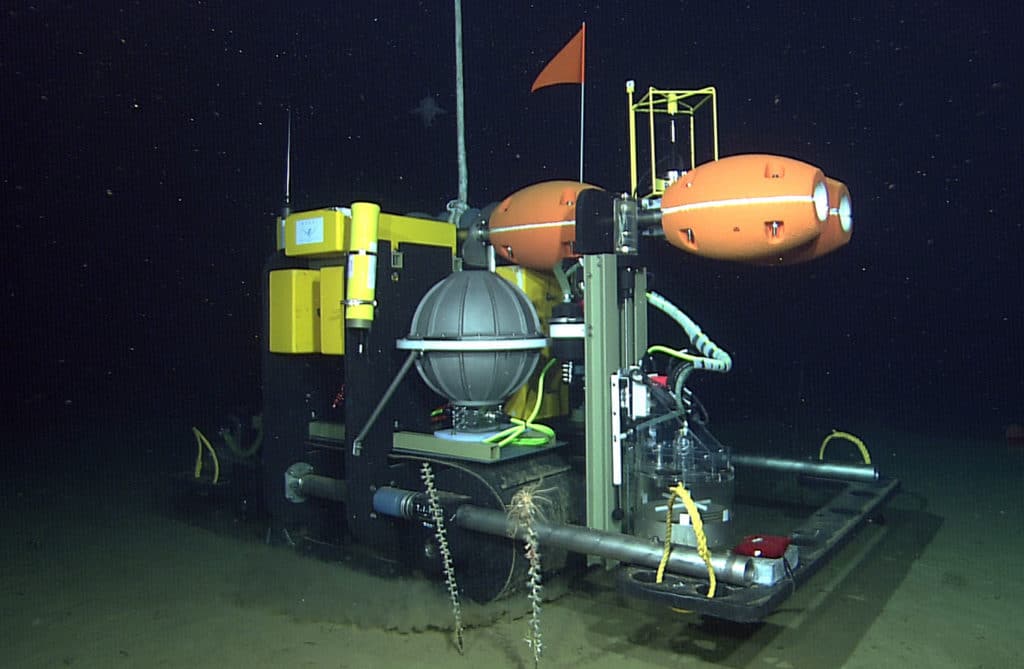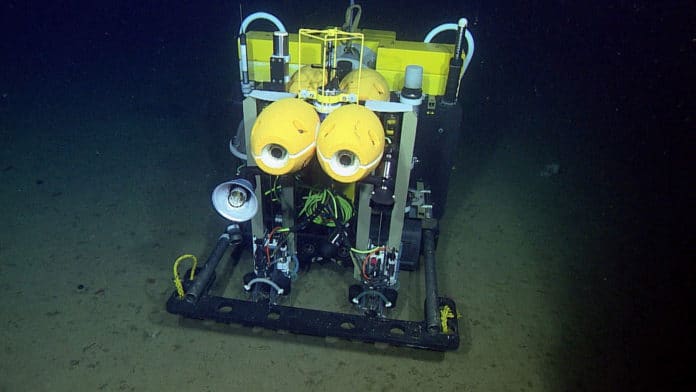While the deep sea is the largest living space on Earth, we still know less about the vast majority of the ocean than we do about other planets in our solar system. MBARI (Monterey Bay Aquarium Research Institute) in California is leveraging advancements in robotic technologies to address this disparity.
Engineers at the MBARI have developed an autonomous robotic rover, called Benthic Rover II, to observe weekly, seasonal, and episodic events on the abyssal seafloor. The rover has been crawling across the muddy bottom at 4,000 meters (13,100 feet), collecting oceanographic data for more than five years.
About the size of a small car, the Benthic Rover II measures 2.6 meters (8.5 feet) long, 1.7 meters (5.6 feet) wide, and 1.5 meters (4.9 feet) high. It is made of corrosion-resistant titanium, plastic, and pressure-resistant syntactic foam and is equipped with a pair of wide rubber tracks to tread gently over the muddy bottom. The rover is designed to handle the cold, corrosive, and high-pressure conditions of the deep sea and can withstand deployments up to 6,000 meters (about 19,700 feet) deep.

“In addition to the physical challenges of operating in these extreme conditions, we also had to design a computer control system and software reliable enough to run for a year without crashing – nobody is there to press a reset button,” explained MBARI Electrical Engineer Paul McGill. “The electronics also have to consume very little power so that we can carry enough batteries to last for a year. Despite all it does, the rover consumes an average of only two watts – about the same as an iPhone.”
Researchers deploy Benthic Rover II from MBARI’s vessel, the R/V Western Flyer, lowering the machine into the water and releasing it to free-fall to the ocean floor. The rover takes about two hours to reach the bottom, and once it lands on the seafloor, the rover can begin its mission.
The robot uses sensors to detect favorable currents flowing along the seafloor to reach an undisturbed site to begin collecting data. It is also equipped with onboard cameras and a pair of transparent respirometer chambers, which allow it to photograph the seafloor, measure fluorescence and the oxygen consumption of the community of life in the mud for 48 hours.
As animals and microbes digest organic matter, they use oxygen and release carbon dioxide in a specific ratio. Knowing how much oxygen those animals and microbes use is crucial for understanding carbon remineralization. After 48 hours, the rover raises the respirometer chambers and moves 10 meters (32 feet) forward, careful not to cross its previous path, and selects another site to sample. It repeats this sampling pattern over and over for the duration of deployment, typically a full year.
Benthic Rover II can expand scientists’ capacity for long-term monitoring of the deep sea. Building a baseline understanding of the deep sea is vital in the face of climate change and deep-sea mining.
